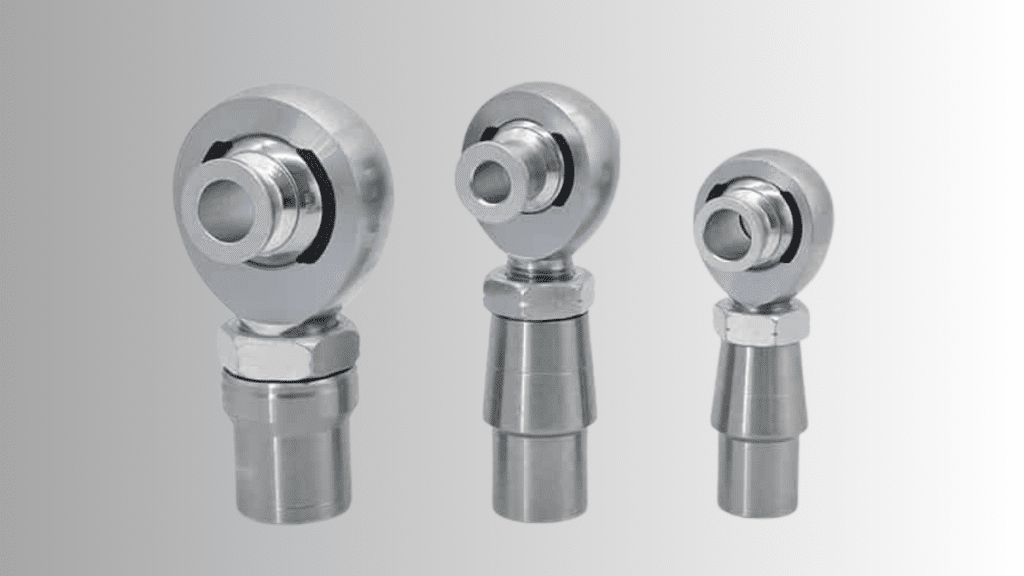Rod ends, often known as heim joints, are a popular upgrade in the world of off-road vehicles and performance racing. But when it comes to daily driving—especially on public roads—things get a bit murky. Are rod ends legal on road? And more importantly, are they safe? If you’ve ever considered swapping your factory tie rod ends for heim joints, read on before you turn that wrench.
What Are Rod Ends and Why Are They So Popular?
Rod ends are mechanical articulating joints used in steering and suspension systems. They allow for angular misalignment and offer greater adjustability and strength compared to factory ball joints. Heim joints, a common type of rod end, are favored in motorsports for their responsiveness and simplicity.
Whether it’s your lifted Jeep, race-prepped Miata, or weekend dune buggy, rod ends can help tighten up your handling and give you precise control—especially in aggressive driving or rough terrain.
Road vs. Off-Road: The Legal Line
One of the biggest points of confusion around rod ends is their legality on public roads. Here’s the short version: it depends.
In the U.S.
Laws vary by state. Some states don’t mention rod ends specifically, but instead require that all steering and suspension components meet safety inspection standards. Others have stricter vehicle modification rules, especially for steering components.
In states like California and New York, where vehicle inspections are thorough, you might get flagged for using heim joints if they’re not DOT-approved.
Outside the U.S.
In countries like Australia, Germany, and the UK, road legality often depends on engineering certification. You’ll need to prove the component is safe and fit for purpose. In general, the stricter the roadworthy requirements, the harder it is to get rod ends approved.
Are Rod Ends Safe for Street Use?
Technically speaking, rod ends are not inherently unsafe. But they are designed for racing environments, not long-term exposure to rain, dust, or daily wear.
Why They’re Risky on the Road
- No dust boots: Unlike OEM tie rod ends, most heim joints don’t come with protective rubber boots. This means dirt and moisture can shorten their lifespan.
- Frequent maintenance: They require regular inspection and greasing to stay safe.
- Harsh ride quality: Rod ends can transmit more vibration and noise into the chassis, which isn’t ideal for daily driving.
- Failure risk: If not properly installed or maintained, they can fail catastrophically—leading to loss of steering.
So while rod ends are not automatically dangerous, they demand more attention than the average driver is used to giving.
When combined with the right performance chassis parts, rod ends can contribute to a more stable suspension geometry, potentially improving safety in specific street or track setups.
What Do the Experts Say?
Ask any seasoned fabricator or motorsport technician, and you’ll hear the same thing: rod ends are great for the track, not the street.
Manufacturers like SYZ, QA1 and FK Bearings do produce “streetable” rod ends with Teflon liners and corrosion-resistant coatings, but even these are considered high-maintenance. They’re not plug-and-play replacements for factory parts—and many of them are explicitly labeled “for off-road use only.”
If you’re set on using rod ends, consider talking to a licensed vehicle engineer or your local DMV. Getting the right certification could save you from legal headaches and potential liability.
When Rod Ends Are (and Aren’t) Legal
Let’s look at a few common builds and whether rod ends might pass inspection:
- Off-Road Only Jeep: Legal. No restrictions if it never touches pavement.
- Daily Driver Truck with Lift Kit: Risky. Suspension mods may fail inspection.
- Track Car with Trailer Transport: Likely okay, as it’s not registered for road use.
- Street-Legal Drift Car: Might be allowed if parts meet specific safety standards and are installed by certified professionals.
Again, it’s not just about legality—it’s about proving safety.
Alternatives to Rod Ends for Street Builds
If you love the adjustability of heim joints but want a road-safe option, consider these alternatives:
- High-end ball joints with adjustable camber/caster
- OEM-style tie rod ends with reinforced construction
- Hybrid joints with sealed dust boots and race-grade materials
You might sacrifice a bit of articulation, but you’ll gain peace of mind—and likely pass inspection without a hitch.
Final Thoughts: Are Rod Ends Legal on Road?
So, are rod ends legal on road? In most cases, no—at least not without extra steps. While heim joints shine in the dirt or on the track, they often fall short of road safety standards due to their lack of sealing, durability under daily use, and higher failure risk if neglected.
That said, rod ends can be made road-legal in certain builds, especially when paired with the right certifications and maintenance routine. But if you’re just cruising to work every day, you might want to leave the race gear for the weekend warrior and stick to road-proven alternatives.
Rod ends are legal in some cases—but only if you’re willing to put in the effort to ensure they’re safe, inspected, and properly maintained. Drive smart, mod responsibly.
